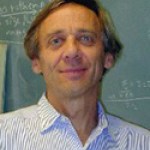Allen Telescope Array
By Dr. Gerry Harp, Senior Astrophysicist, Center for SETI Research, SETI Institute, and Gail Jacobs
Trained as a quantum mechanic, Dr. Gerry Harp was deeply interested in possibilities for using the multiple telescopes of the Allen Telescope Array to generate steerable "beams" on the sky -- beams that could be far smaller than any single antenna could produce. Such beams don't emit anything, but work in reverse by capturing only energy that comes from the sky in a certain direction. Gerry joined the SETI Institute in 2000, practically at the telescope's inception and uses the telescope for…
As you have undoubtedly heard from sources more overtly journalistic than this one, SETI is back online!
After federal and state financial cutbacks forced the institute's shiny new Allen Telescope Array (ATA) into indefinite hibernation earlier this year, cosmically-minded geeks all over the globe donated money in droves, bringing the search for extraterrestrial life back from oblivion. Over $200,000 in donations from thousands of fans -- including Contact's own Jodie Foster, science-fiction writer Larry Niven, and Apollo 8 Astronaut Bill Anders -- will get science operations up and running…
Don Backer, an astrophysicist at the University of California, Berkeley who discovered the first millisecond pulsar, died on July 25. He was director of Berkeley's Radio Astronomy Laboratory and the Allen Telescope Array (ATA) in Hat Creek, California - a collection of 42 dishes that recently began scanning the sky and searching for extraterrestrial intelligence.
"Memories of a special moment with Don Backer"
By Jill Tarter
Don and I had only a few glancing interactions from the time we were engineering physics students at Cornell until one memorable day in 1982. On that day I pulled my…


